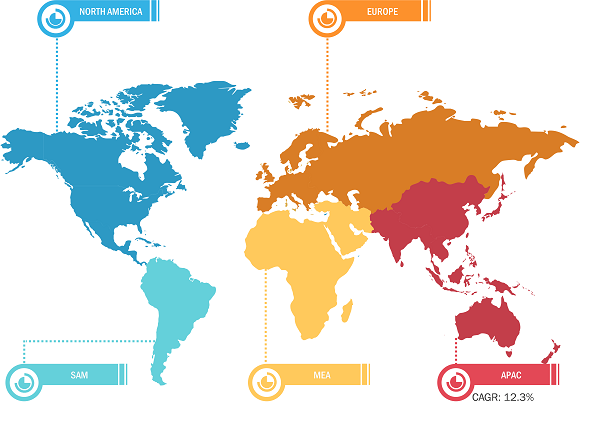Rising Use of Hybrid Composites in Wind Energy and Automotive Industries to Bolster Hybrid Composites Market Growth During 2023–2028
According to our latest study on “Hybrid Composites Market Forecast to 2028 – COVID-19 Impact and Global Analysis – by Fiber Type, Resin, and Application,” the hybrid composites market size is expected to grow from US$ 856.02 million in 2022 to US$ 1,678.47 million by 2028; it is estimated to register a CAGR of 12.1% from 2023 to 2028. The report highlights key factors driving the hybrid composites market growth and prominent players along with their developments in the market.
Hybrid composites consist of two or more fiber types embedded in a single polymer matrix. They offer various enhanced properties and advantages over traditional composite materials. Hybrid composites are used to combine the properties of different types of fibers. Fibers used to make hybrid composites are carbon, glass, aramid, and natural fibers. A few major factors driving the global hybrid composites market growth are the growing demand for lightweight materials in the aerospace & defense industry and the rising use of hybrid composites in wind energy and automotive industries.
Hybrid Composites Market Breakdown – by Region
Hybrid Composites Market Forecast to 2028 - Global Analysis by Fiber Type [Carbon/Aramid, Carbon/Glass, High-Modulus Polypropylene (HMPP)/Carbon, Ultra High Molecular Weight Polyethylene (UHMWPE)/Carbon, and Others], Resin (Thermoset and Thermoplastic), Application (Automotive, Aerospace, Marine, Wind Energy, Sporting Goods, and Others), and Geography
Hybrid Composites Market Key Findings and Share by 2028
Download Free Sample
Rapid developments in material technology continue to support variations in the structure of wind turbines. Many of these variations were primarily introduced to reduce the prices of turbines. Factors such as corrosion resistance, fatigue resistance, toughness, rigidity, weight, and appearance of wind turbines significantly impact their operations. Glass fiber-reinforced plastics (GRPs) are the most used type of composite material in wind turbine manufacturing. Major benefits of using GRPs include hybrid mechanical properties, high corrosion resistance, high-temperature tolerance, simplified manufacturing, and favorable costs. In 2022, the US Congress announced the launch of coordinated actions to develop new floating offshore wind platforms and clean energy technology. The government aims to deploy offshore wind platforms to generate 30 gigawatts (GW) of energy by 2030, sufficient to power 10 million homes with clean energy. Such favorable government initiatives are increasing the demand for hybrid composites in the wind energy industry. Further, the application of hybrid composites in the automotive sector is growing at a significant pace. In this sector, plastics are used in large quantities to produce composites. Hybrid composites have excellent acoustic and thermal properties, which makes them ideal for vehicle interior parts. The growing demand for hybrid composites from the automotive industry for the manufacturing of fuel-efficient, lightweight vehicles such as electric vehicles (EVs) is driving the hybrid composites market.
Hexcel Corp, Lanxess AG, SGL Carbon SE, Gurit Holding AG, Avient Corp, Teijin Ltd, Solvay SA, PGTEX China Co Ltd, Toray Industries Inc, and Mitsubishi Chemical Holdings Corp are among the key players operating in the hybrid composites market. These market players focus on providing high-quality products to fulfill customer demand. For this, they invest significantly in research and development activities.
Impact of COVID-19 Pandemic on Hybrid Composites Market
An unprecedented rise in COVID-19 cases and the subsequent shutdown of numerous manufacturing facilities limited the hybrid composites market growth in early 2020. The COVID-19 outbreak hindered the revenue and cash flow of aerospace original equipment manufacturers (OEMs) and suppliers. The pandemic disrupted the aerospace industry as passenger traffic was reduced due to global and regional air travel restrictions. Many airlines canceled orders for new aircraft, and OEMs reduced production during the pandemic. As per the General Aviation Manufacturers Association’s (GAMA) 2020 year-end general aviation aircraft billings and shipments report, the value of airplane deliveries was US$ 20 billion in 2020, a decline of ~14.8% from 2019. All these factors dropped the demand for hybrid composites. Further, the global market for all types of cars was significantly affected due to the COVID-19 pandemic. Supply chain disruptions and increased labor costs raised the prices of materials required in the construction, automotive, and aerospace industries in North America in 2020. According to the US International Trade Commission (USITC), the automotive industry in the US was highly vulnerable, and vehicle sales decreased by 15% from 2019 to 2020. The pandemic had adversely impacted the construction and automotive industries in the region, which reduced the demand for hybrid composites from these industries.
The hybrid composites market began reviving in late 2020 as governments took significant measures, such as well-coordinated vaccination drives. Industrial activities have recovered notably, which fueled the hybrid composites market growth.
The report includes the segmentation of the hybrid composites market as follows:
The global hybrid composites market is segmented on the basis of fiber type, resin, and application. Based on fiber type, the hybrid composites market is segmented into carbon/aramid, carbon/glass, high-modulus polypropylene (HMPP)/carbon, ultra high molecular weight polyethylene (UHMWPE)/carbon, and others. Based on resin, the market is bifurcated into thermoset and thermoplastic. Based on application, the hybrid composites market is segmented into automotive, aerospace, marine, wind energy, sporting goods, and others. By geography, the market is broadly segmented into North America, Europe, Asia Pacific, the Middle East & Africa, and South & Central America. The North America hybrid composites market is further segmented into the US, Canada, and Mexico. The market in Europe is subsegmented into Germany, France, the UK, Italy, Russia, and the Rest of Europe. The Asia Pacific hybrid composites market is further segmented into China, India, Japan, Australia, South Korea, and the Rest of Asia Pacific. The market in the Middle East & Africa is subsegmented into South Africa, Saudi Arabia, the UAE, and the Rest of Middle East & Africa. The South & Central America hybrid composites market is further segmented into Brazil, Argentina, and the Rest of South & Central America.
Contact Us
Phone: +1-646-491-9876
Email Id: sales@theinsightpartners.com